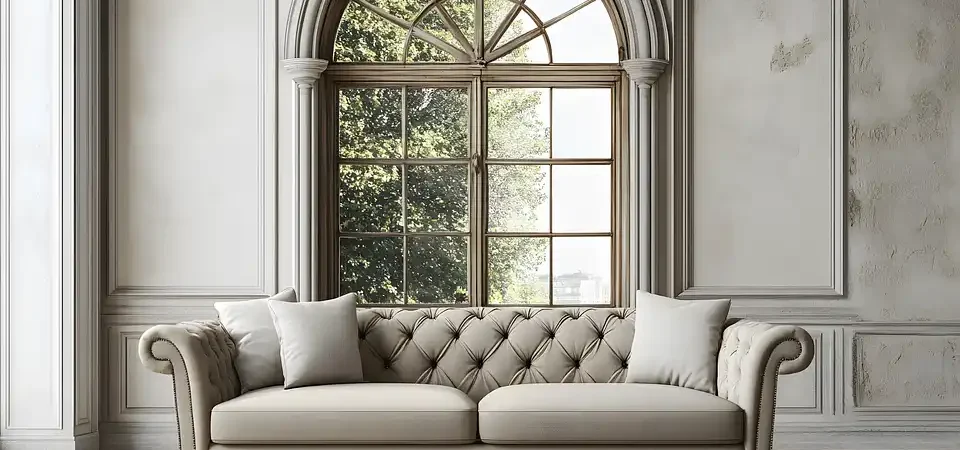The landscape of office furniture is undergoing a significant transformation as we progress through 2025. This evolution is driven by the rise of hybrid work models, a heightened focus on employee well-being, and a collective commitment to sustainability. Modern office furniture now emphasizes flexibility, comfort, and technological integration, aiming to create work environments that are both functional and inspiring.
The Evolution of Office Furniture
From Traditional to Modern Workspaces
Historically, office furniture was characterized by rigid, uniform designs that prioritized functionality over comfort. However, the shift towards more dynamic work environments has led to the emergence of furniture solutions that cater to diverse work styles and preferences. This change reflects a broader understanding of the importance of a well-designed workspace in enhancing productivity and employee satisfaction.
The Impact of Hybrid Work Models
The adoption of hybrid work models, where employees split their time between home and the office, has significantly influenced office furniture design. Furniture now needs to be adaptable, supporting both collaborative and individual work seamlessly. This flexibility ensures that workspaces can be quickly reconfigured to meet varying needs, fostering a more agile and responsive work environment.
Key Trends in Office Furniture for 2025
1. Ergonomic and Wellness-Focused Designs
As awareness of the health implications of prolonged sitting grows, ergonomic furniture has become a priority. Adjustable standing desks, chairs with lumbar support, and sit-stand workstations are now standard in many offices. These designs aim to reduce discomfort and promote better posture, contributing to overall employee well-being. (afcindia.in)
2. Sustainable and Eco-Friendly Materials
Environmental consciousness is reshaping the office furniture industry. Companies are increasingly opting for furniture made from recycled, biodegradable, and responsibly sourced materials. Non-toxic, low-VOC finishes are replacing chemical-heavy coatings, enhancing indoor air quality and reducing environmental impact. (afcindia.in)
3. Flexible and Modular Designs
The need for adaptable workspaces has led to the popularity of modular furniture. Modular desks, foldable partitions, and mobile seating allow for quick reconfiguration of spaces to accommodate different work styles and team dynamics. This flexibility supports both collaborative sessions and focused individual work, catering to the diverse needs of modern workplaces. (afcindia.in)
4. Technology Integration
Modern office furniture increasingly incorporates technology to enhance functionality. Desks with built-in wireless charging, smart lighting, and AI-powered height adjustments streamline daily tasks and keep employees connected. Soundproof office pods and smart conference tables with embedded screens and microphones improve remote collaboration, reflecting the growing role of technology in the workplace. (afcindia.in)
5. Vibrant and Biophilic Design Elements
To create more inviting and stimulating environments, offices are embracing biophilic design principles. Incorporating natural elements like greenery, wood textures, and natural light not only enhances aesthetics but also boosts employee well-being and productivity. Color psychology influences furniture choices, with calming blues, energizing greens, and warm neutrals replacing monotonous grays. (afcindia.in)
6. Cozy Collaboration Spaces
The traditional conference room is being replaced by relaxed, lounge-like areas that encourage creativity and casual discussion. Soft seating arrangements, multi-functional tables, and privacy pods create comfortable spaces for team collaboration and informal meetings, fostering a more dynamic and engaging work environment. (firstcallofficefurniture.com)
7. Personalized Workstations
Even in open-concept designs or hot-desking environments, employees seek personalization to feel comfortable and connected to their workspace. Customizable workstations with adjustable desk accessories, personalized storage solutions, and desk dividers allow individuals to tailor their space to their preferences, balancing uniformity with personal expression. (firstcallofficefurniture.com)
8. Multi-Use Storage Solutions
As businesses move towards paperless systems, the need for large filing cabinets diminishes. Office storage is becoming more compact and multi-functional, with lockable cubbies, mobile storage carts, and vertical shelving maximizing space and providing a modern aesthetic. (firstcallofficefurniture.com)
Considerations When Selecting Office Furniture
Aligning with Company Culture
The choice of office furniture should reflect and reinforce the company’s culture and values. For instance, a tech startup might opt for modern, flexible furniture to promote innovation and collaboration, while a law firm might choose more traditional pieces to convey professionalism and stability.
Budget Constraints
While investing in quality office furniture is important, it’s essential to balance this with budget considerations. Prioritizing key pieces that offer the best value and durability can help manage costs without compromising on quality or functionality.
Future-Proofing
Selecting furniture that can adapt to future changes in the workplace is crucial. Opting for modular and flexible designs ensures that the office can evolve with the company’s needs, accommodating growth and shifts in work dynamics.
Conclusion
The office furniture trends of 2025 emphasize a holistic approach to workspace design, integrating ergonomic comfort, sustainability, technological innovation, and aesthetic appeal. By embracing these trends, companies can create environments that not only enhance productivity but also promote employee well-being and satisfaction.
For more insights into the latest office furniture trends and innovations, consider exploring resources like Arnold’s Office Furniture.

